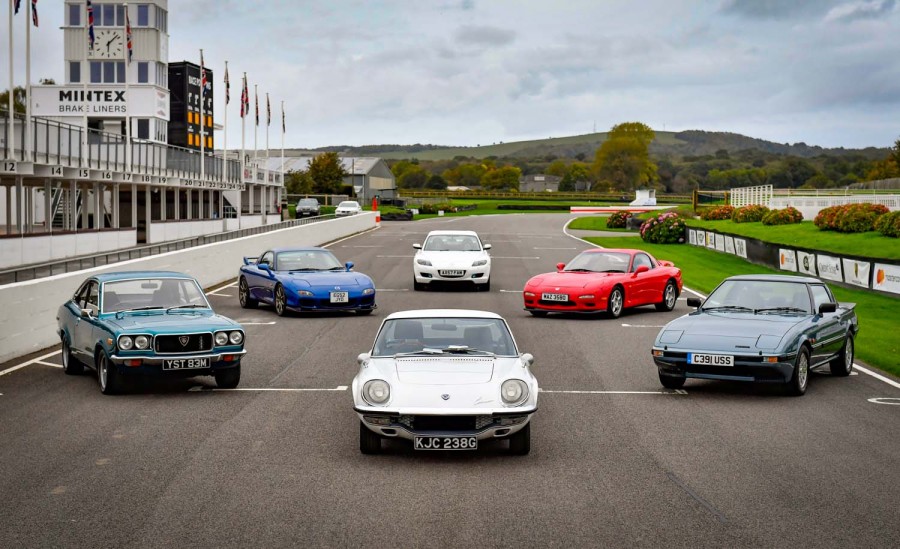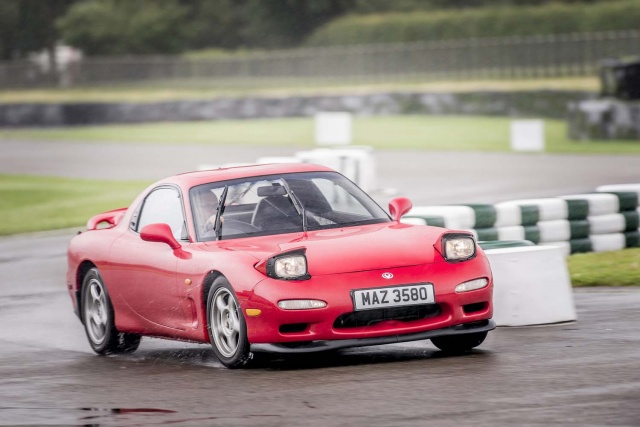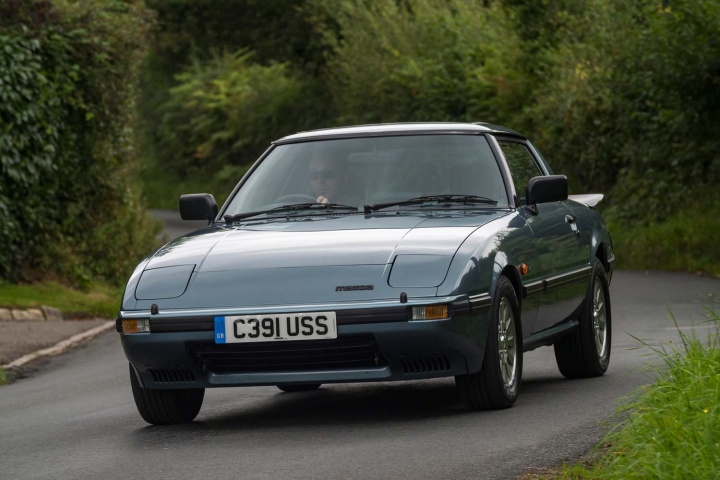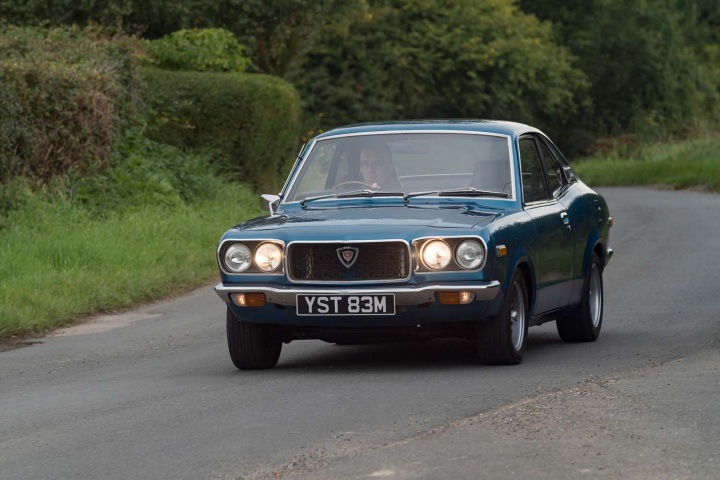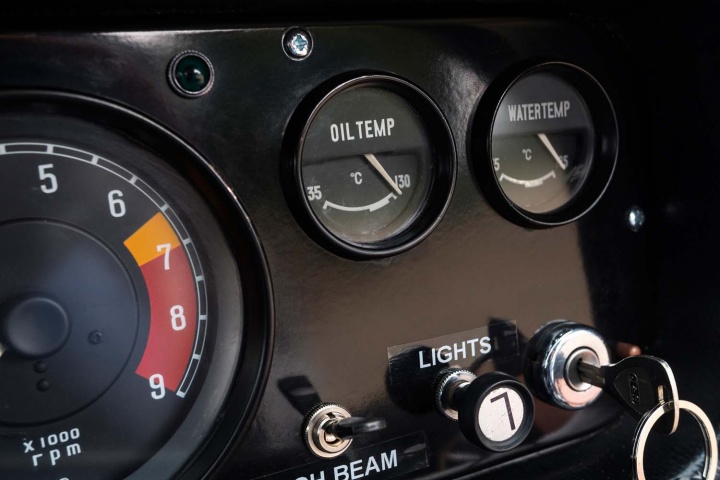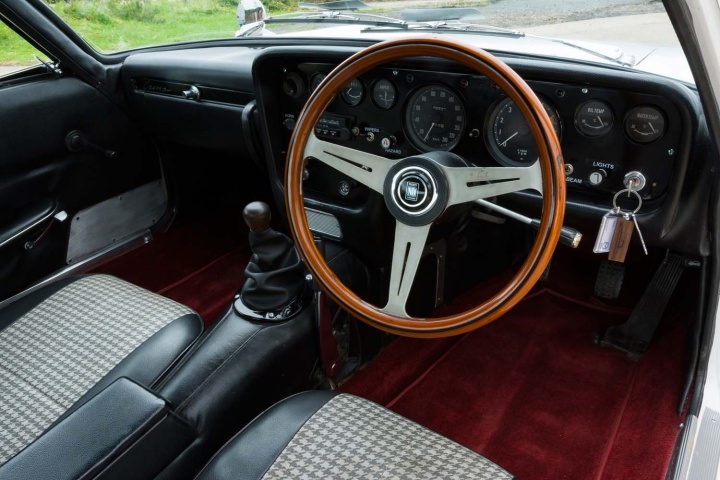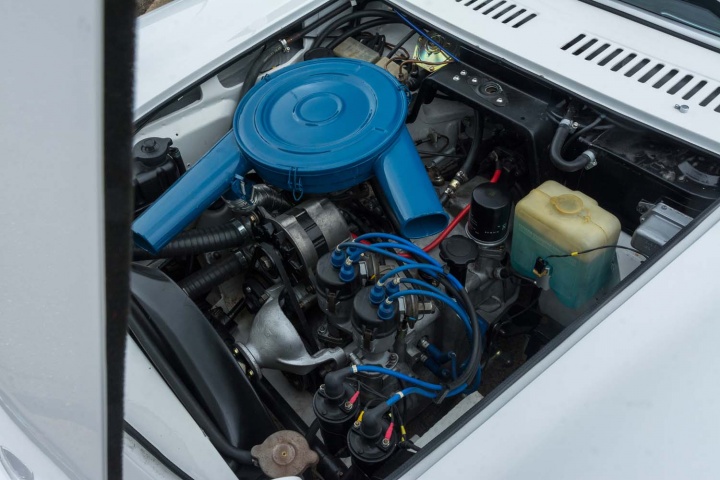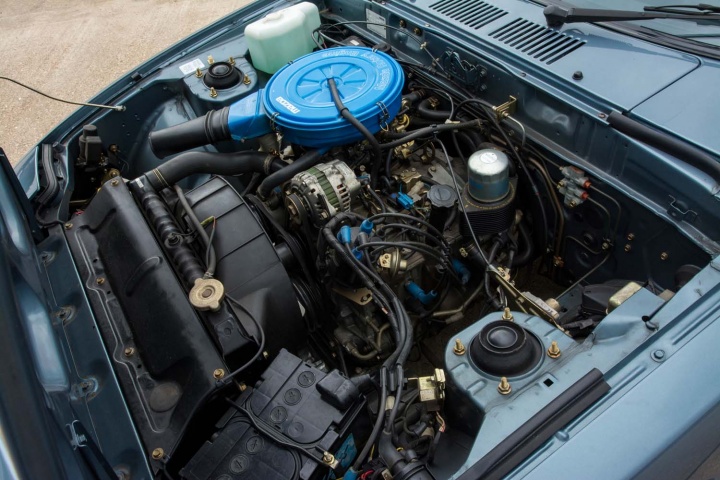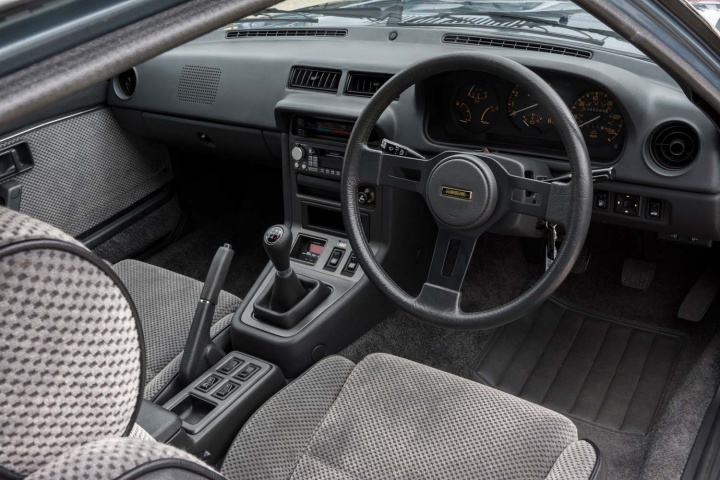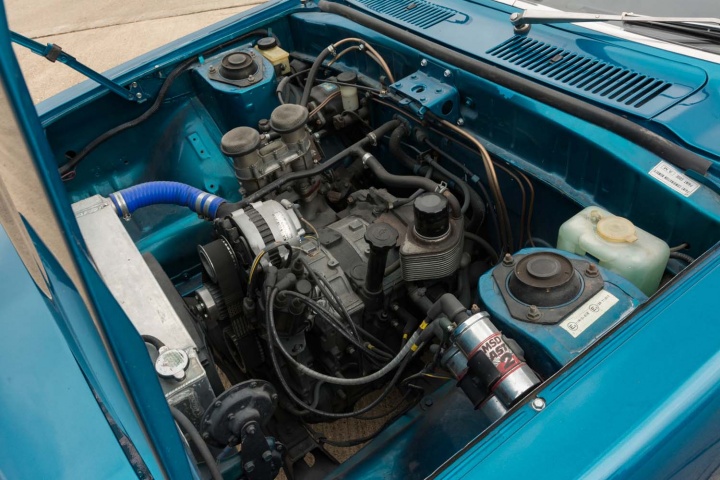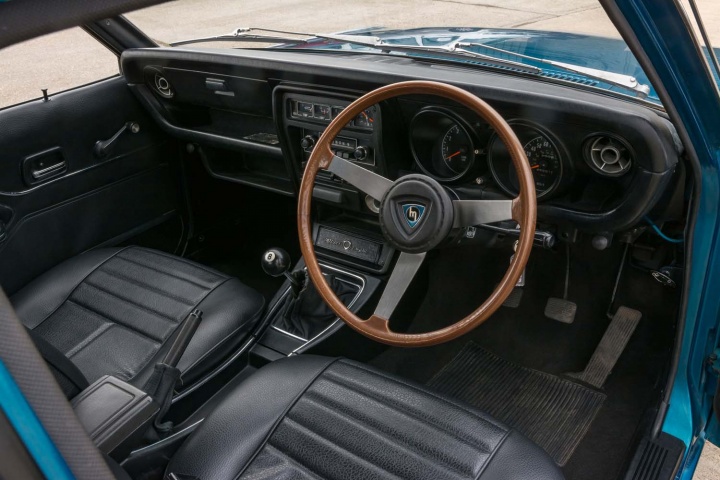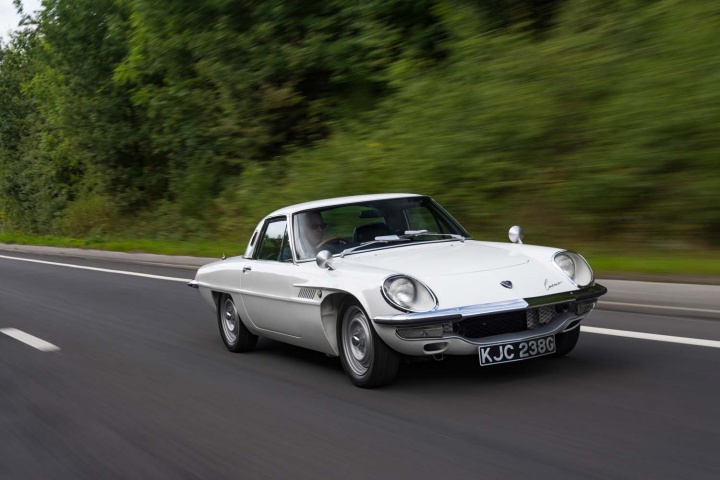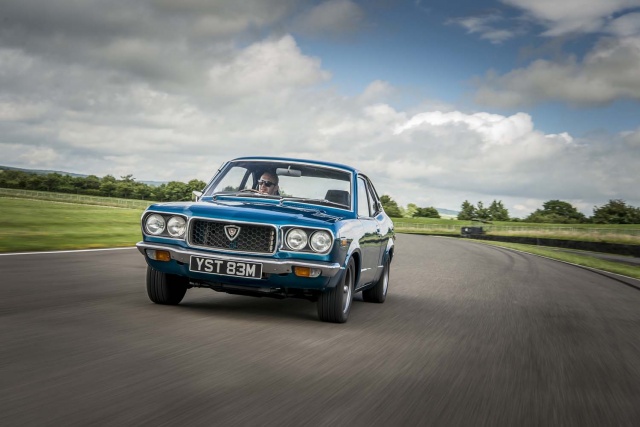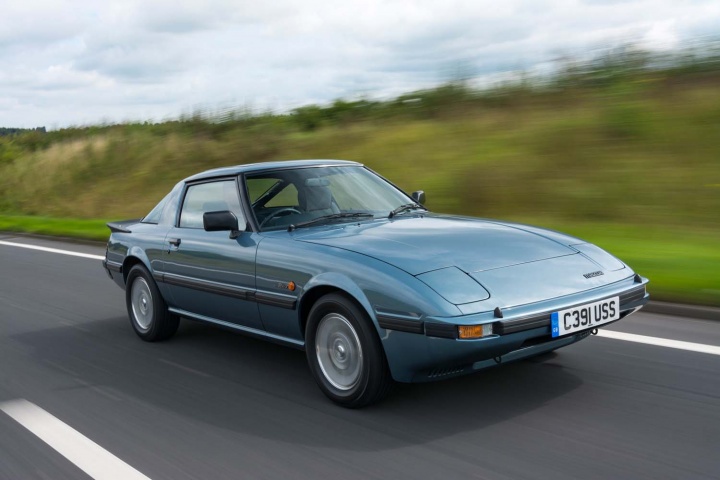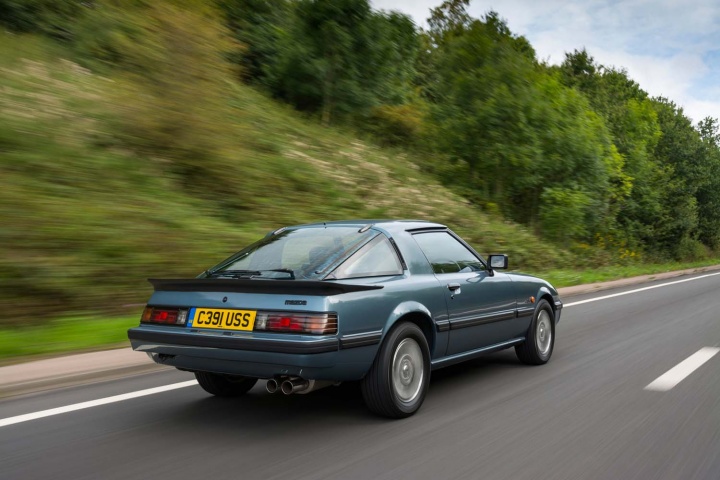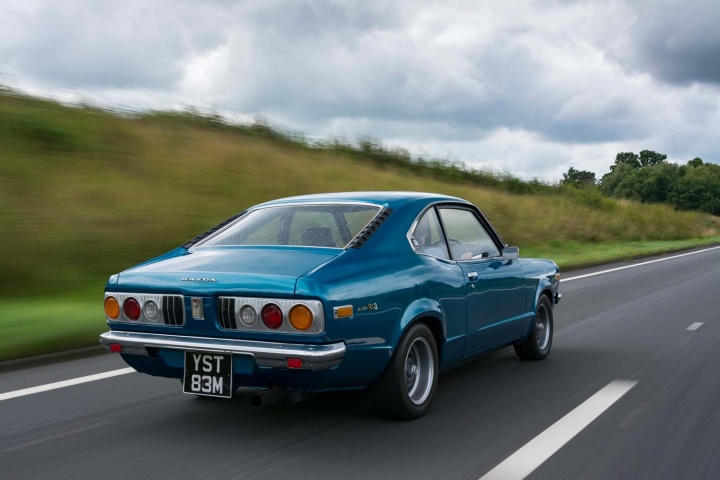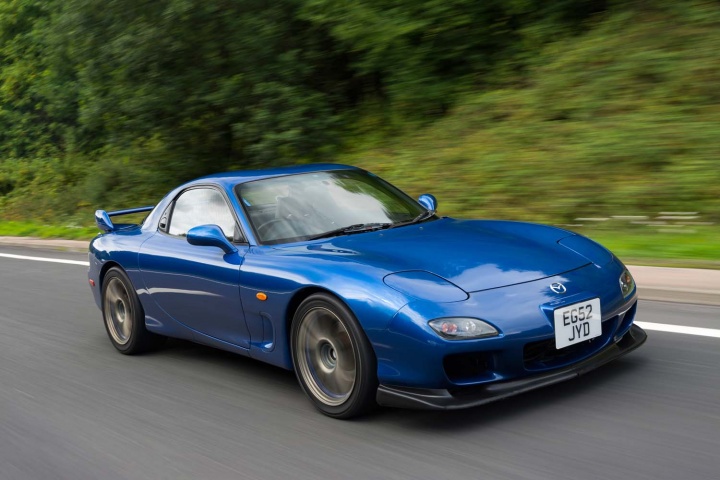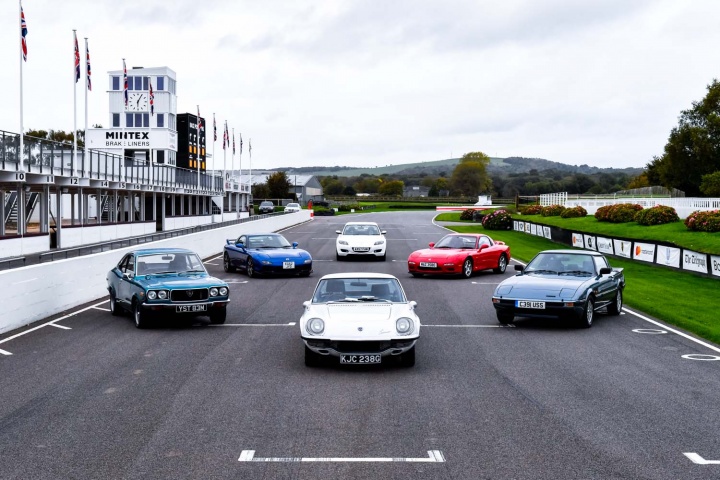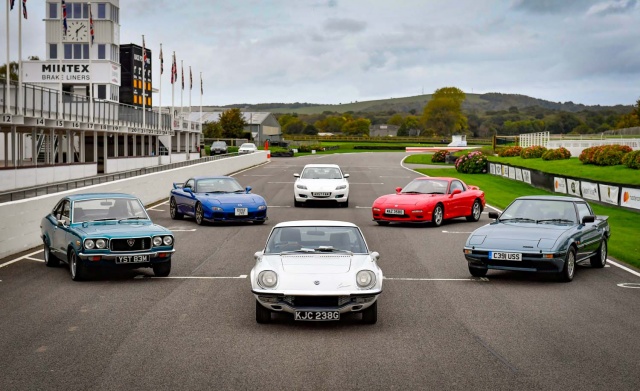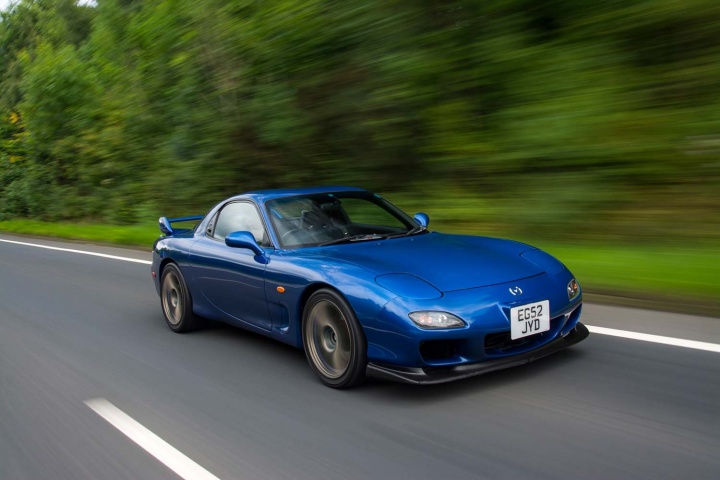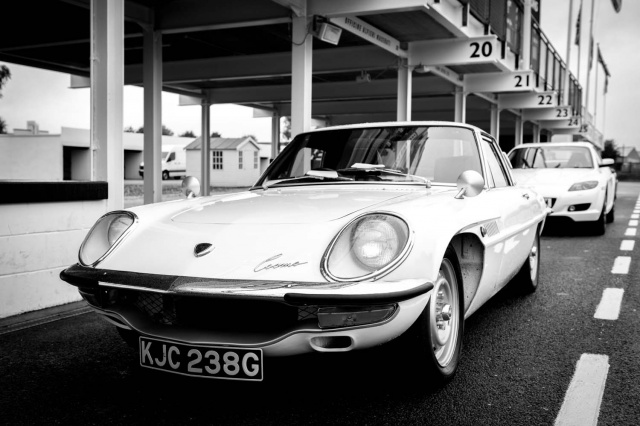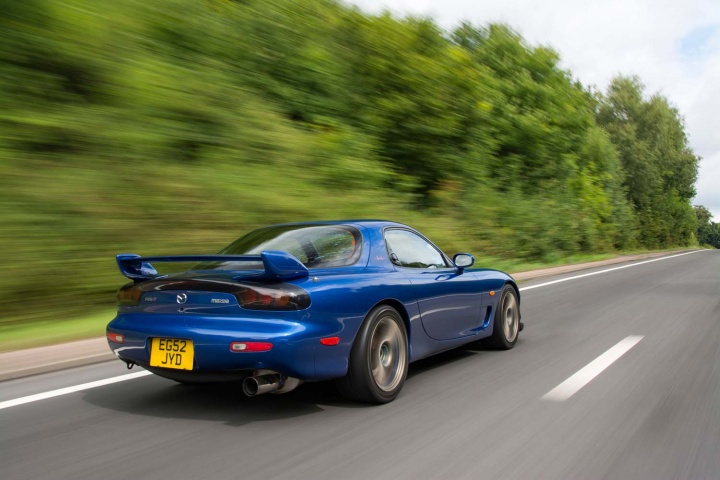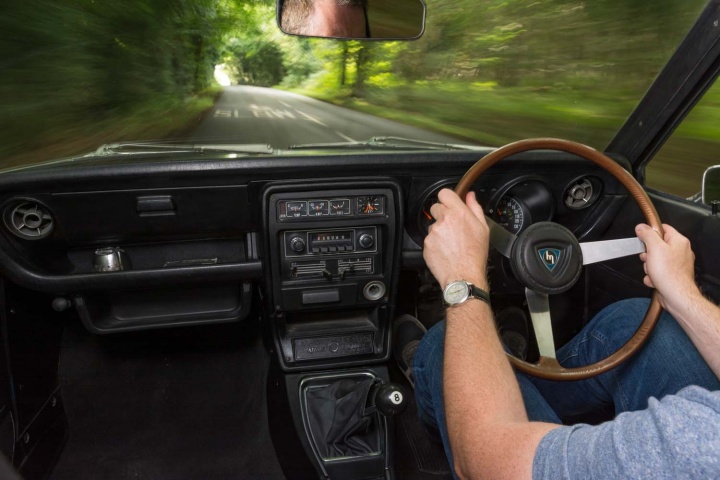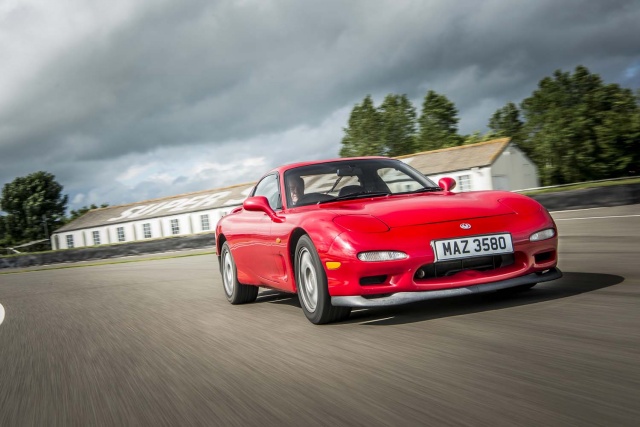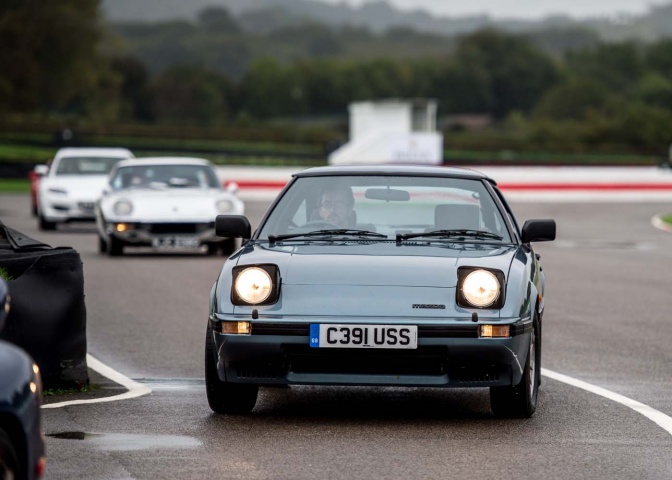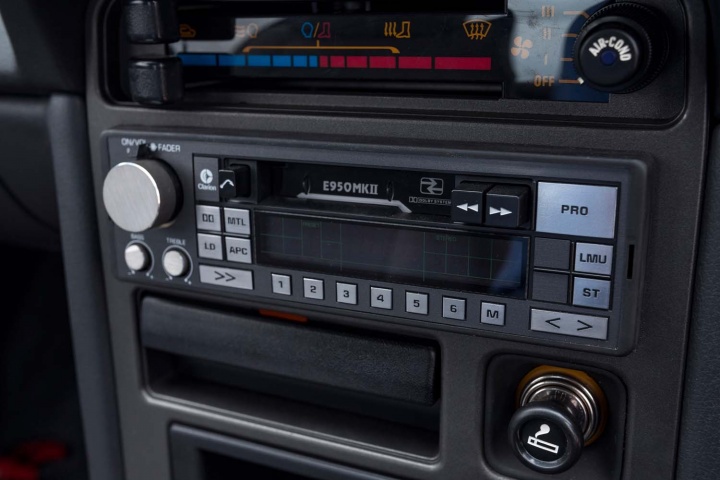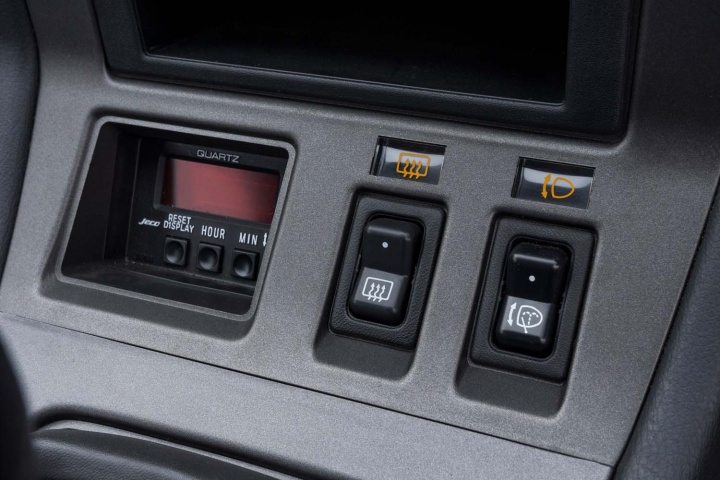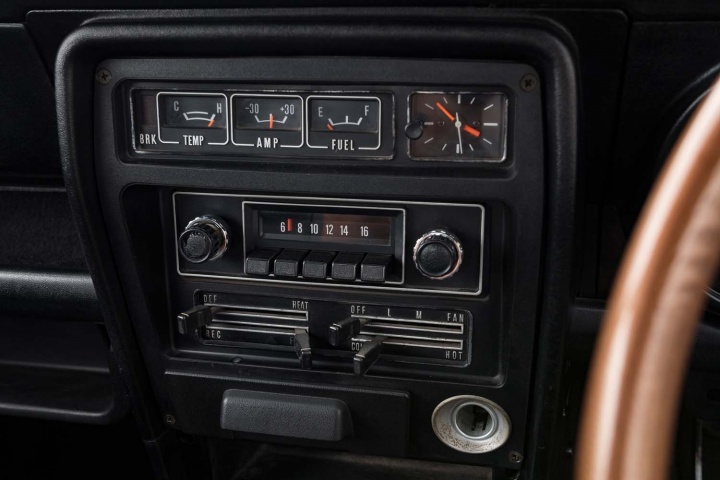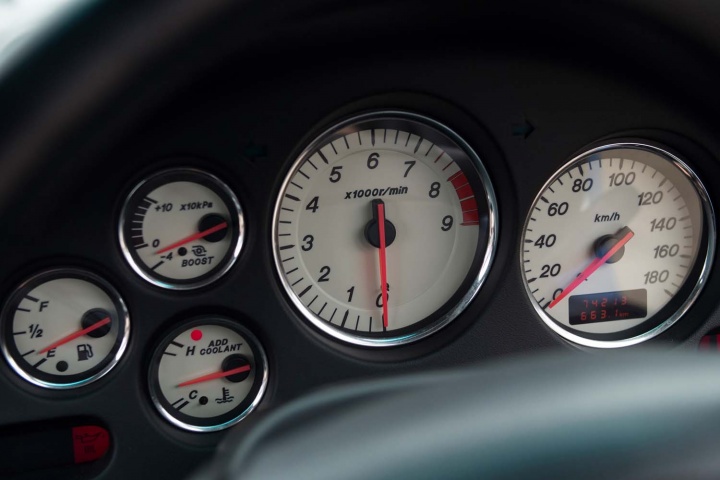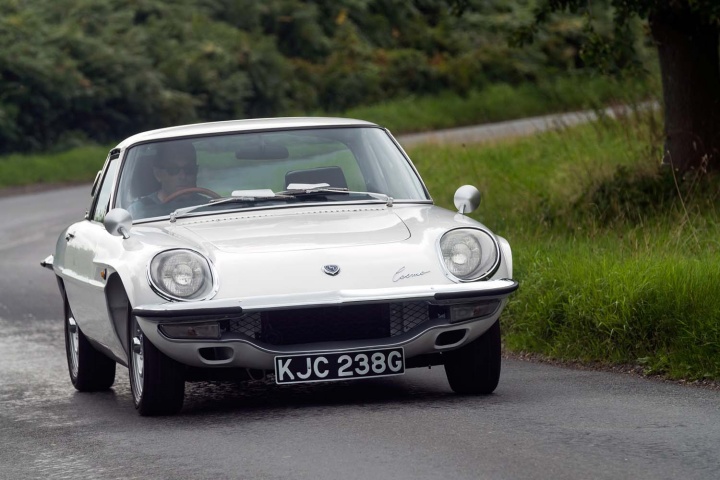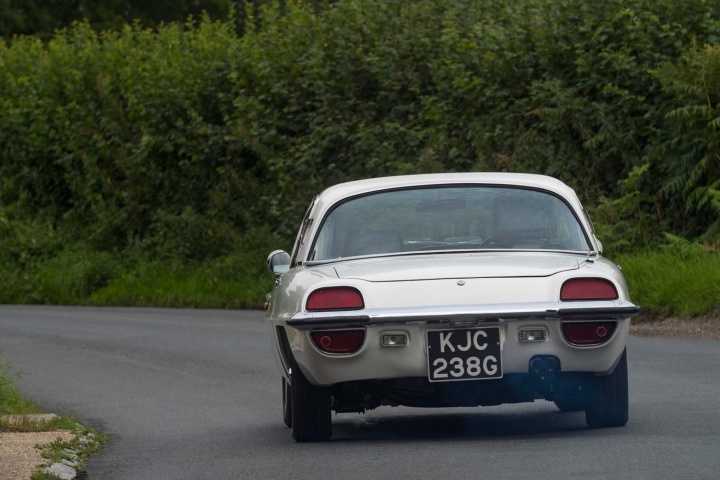As a fan of rotary engines, you kind of hold on to even the thinnest of straws of hope. The faintest twitch that Mazda, the last rotary-engine car maker standing, might yet consider having another go at this bewitching technology.
In this, the 50th anniversary of Mazda’s first rotary-engined production car, there seemed to be just that glimmer. A concept car, announced for the Tokyo Motor Show this October, seemed to be drawing on the styling of the recent RX-Vision rotary concept car. And Mazda had also invited us to come along and sample some of the rotary greats that it keeps on its historic car fleet. Surely the confluence of events could only lead to one thing…?
That first rotary-engined car was the Cosmo, or Mazda 110S coupe, depending on which market it was sold in. A low-slung, two-seat fixed-head coupe, it’s name sprang from the global obsession with all things space-age that was very much in the air in 1967, and the shape kind of matched up nicely with that, too.
From the front there’s an Italian edge to the styling, one that obviously cribs from the Alfa Romeo Duetto. But the further back you go, the more mid-sixties Ford Thunderbird you can find in it until, by the time you reach the rear lights, it’s almost pure Americana. It’s not too hard to imagine an astronaut casually swinging his imported Cosmo into a parking space a Kennedy Space Centre, before swaggering up to the launch pad (if they hadn’t all been driving Corvettes, of course).
Actually, a jockey-sized astronaut would be the ideal driver for a Cosmo, because roomy it ain’t. The dash, which is dominated by big white-on-black gauges and a beautifully slim Nardi wood-rim steering wheel, is tiny. With the seat fully back my knees are still bent behind Nardi’s slivers of timber, and my head is brushing the roof in manner most distressing should a roll-over occur.
The engine, the heart of the Cosmo, is essentially the same as that made by NSU in Germany at the time. Mazda had noted NSU’s work with German engineer Felix Wankel, and decided to buy a licence to make an engine that went round and round, rather than up and down. At just 1.0-litre in capacity for its two-chamber engine, getting 110hp was close to witchcraft in the 1960s. A contemporary Austin 1100 engine, by comparison, makes somewhat less than half that figure. No wonder the Japanese were entranced, and no wonder they went to such great lengths to try and make the damned thing work properly. Mazda experienced the same rotor-tip wear issues that would, eventually, sink NSU through warranty claims, and Mazda’s chief engineer once exhorted his team to think about nothing but rotary engines “even in your sleep.”
Today, at least, I’m confident that the Cosmo’s engine will work, not least because this one has been carefully fettled by Mazda, with help from the guys at the Jota Sport racing team, which cares for these delicate historics when it’s not building race-winning LMP2 cars. Sure enough, with a twist of the delicate, slender key and a brief churn of the starter, the Cosmo fires up and off we go.
And off we go quite briskly. As anyone who’s driven a later RX-8 will know, torque is not the rotary engine’s thing, but the Cosmo weighs bugger-all (just 940kg) so even on a tickled throttle, it flies along. Normally, in a fifty-year-old car, I’d take things pretty gently, but the Mazda PR guy who’s leading our convoy has other ideas, and I have to work the Cosmo pretty hard to keep up. It does show the Cosmo’s age, of course. The steering is heavy and less than precise, the gearbox feels delicate and the brakes, although not bad for a car of this age, are hardly confidence inspiring. And yet, thanks to that wonderful engine, the Cosmo keeps up with a hard-driven modern Mazda across country. As auspicious a start for Mazda’s rotary heritage as it was for our weekend of test driving…
Next up, things got a little bit crazy. The RX-3, third in line (after the super-rare Luce coupe) in Mazda’s rotary lineage is a tiny, pugnacious two-door, that looks slightly as if Frank Bullitt had left his green Mustang out in the rain a bit too long. The RX-3 was a successful racer in its day, taking on the first-generation Nissan Skyline in Japan and racing in the Australian touring car championship, but the road-going model was a relatively humble machine in comparison. Not this one, though. It has been modified with the engine and five-speed transmission from the later RX-7, and an exhaust that sounds all but straight-through. All of Mazda’s rotary engines are linked by a common thread of eerie, vibration-free smoothness, but this little RX-3 is adding quite the symphonic performance to its repertoire. Banging, popping, farting and gurgling, it only just slips under the noise restrictions for a couple of slow laps of Goodwood Circuit in West Sussex, before adopting a rather more unhinged attitude out on the road.
It’s properly quick this little thing, and soon proves a firm favourite with almost everyone who drove it. In spite of wooden brakes, and steering that seems only vaguely connected to the front wheels, it’s an utter hoot to drive. Noisier than an F1 car, and with tremendous reserves of performance. Jota and Mazda have debated replacing the engine with an original, and returning the suspension and wheels to standard spec, but have decided that, nah, the little RX-3 is far too much fun as it is. And so say all of us.
Up next, though, is a real find. We’ve all dreamed of the ultimate barn find, a car that nobody else has seen for years or decades, tucked away in a shed somewhere. Well, Mazda’s heritage RX-7 MkI coupe is just that, only better. You’d expect a barn find to be a rust bucket, in need of total reconstruction. Not this one. Formerly owned by an ex-Mazda dealer, the car was unsold in his showroom in Scotland on the day, in 1985, that the business closed. Instead of being driven or flogged off cheap, that dealer put the RX-7 into a shed, and kept it. Kept it perfectly, too - making sure to at least once a year drive it a little to keep everything ticking along, and when Mazda tracked the car down earlier this year, it had fewer than 80km on the odometer, and felt and smelled showroom fresh.
It is an astonishing car to drive, and one feels almost guilty for every extra rotation of the wheels. Well, you would do if it wasn’t quite so lovely to drive. The unassisted steering, hefty at parking speeds, soon lightens up and proves to be accurate and communicative in a way that more modern systems have forgotten. The 12A rotary engine displaces 1,142cc, yet develops a healthy 115hp (again, think back to what other 1.1-litre engines could provide back in 1978, when this model was launched…) and has the most delightful five-speed gearchange. After some initial hesitation, cautious of overdoing it on unfamiliar roads in a car with such history and provenance, the RX-7 just starts to fly. Brisk, rather than quick, it is truly lovely to drive, with proportional responses from all controls and a lovely ride quality that reminds you that sporting cars don’t have to be rock-hard over bumps. I loved it, adored it, and not just for the evocative pop-up headlights (I love pop-up lights almost as much as I love rotary engines…).
There was, sadly, a small gap in the cars which Mazda had provided, as there’s no RX-7 MkII, the one that looked (rather too obviously) like a Porsche 944 and which had passive rear-wheel steering (Japanese coupes and rear-wheel steering; more eighties than MT USA with Vincent Hanley…). Still, skipping the late eighties allows us to fast-forward to the early nineties and what was possibly the high-water mark for Mazda rotaries - the FD model RX-7 MkIII.
Utterly gorgeous (the compact nature of the rotary engine meant that Mazda’s designers could suck the bonnet line down low), the MkIII developed some serious power. Thanks to a turbo strapped to the 13B 1.3-litre rotary engine, it develops a not-inconsiderable 237hp at 6,500rpm. But it keeps revving to past 8,000rpm… Weighing just 1,300kg, no wonder they were quick, and no wonder so many were written off in accidents.
Sadly, it was a bit of a commercial flop for Mazda in Europe, with barely more than 1,000 sold through official dealers (although rather more were grey-market imported), but it remains, alongside the original Honda NSX and Toyota Supra MkIII, a touchstone of 1990s Japanese high-performance cars, cars that ruled all at a time when the likes of Porsche and Ferrari had, quite frankly, lost their way.
The RX-7 MkIII had most certainly not lost its way. With that turbocharged grunt providing meaningful shove from low-down in the rev range (at last!), the RX-7 was now properly potent. Driving this 1994 example, with close to 160,000km on the clock, you can see the car’s age in the ill-sorted driving position (too high relative to the unadjustable wheel) and plain, black plastics in the cabin (although it’s worth pointing out that every single button and system still worked perfectly…) but, boy, is it good to drive. Meaty, talkative power steering and a truly gorgeous chassis balance mean it’s still properly good fun on a challenging road. The ride quality has firmed up noticeably from the old Mk1, but that aside, here is a car you could happily use every day and never tire of, from the rising howl of the engine note to the delicious weight of the gearshift, to the sight of those still-evocative pop-up lights at the end of the low bonnet.
The blue RX-7 MkIII next to the red one seems to have had a bit of a run in with a Carnoisseur catalogue. It has a big wing, silly wheels, a pointless pencil-thin gear shifter, more aggressive bucket seats, and a low-hanging front splitter. All a bit pointless? Well, no actually - and once you clock the decal on the rear roof pillar, you’ll see why. This is a Bathurst special edition, never originally sold in Europe, and built to celebrate Mazda’s prowess in Australian racing. It gains an extra turbocharger and 40hp, bringing it to 280hp, while also shedding around 40kg of weight.
At low rpm, it feels barely any different to the standard MkIII, aside from steering that’s not as nice, thanks to those silly wheels and tyres. Get it to 4,500rpm though, and that second turbo kicks in, hard, and the RX-7 goes. It really goes, feeling roughly comparable to a modern Porsche Cayman S in performance terms. The daft add-on bits are easily forgiven for a car that accelerates like this, and sounds this good doing it, with big oh-so-boy-racer huffs from the turbo wastegate when you lift off. Sideways, sir? Only the flex of a throttle foot away, if you fancy…
All of which makes the RX-8 feel a tiny bit pedestrian. The ‘Renesis’ 1.3-litre rotary engine that replaced the turbo 13B was naturally aspirated, but without the turbo it takes time to build power. 230hp sounds like a lot, but most of it is located close to 9,000rpm, so you have to wait for the revs to build up. Once they have, though, the RX-8 is a lovely car to drive. Roomier (with four-seats) and more practical (those useful rear-hinged back doors) than the RX-7 that preceded it, it’s also more comfortable and far more refined. A decade old now, the age shows in the cabin layout and switchgear, but the seats on this 40th anniversary model are lovely (and much higher-set than any other car here) and it’s the only one that lopes, easily and quietly, along a short stretch of motorway. It’s a lovely car, one that you could easily buy today and use for years to come, were it not for its high-ish fuel consumption (25mpg would be a daily reality) and concerns over maintenance (Mazda did much to improve the rotary’s reliability over the years, but it was never perfected in that respect).
Pick a favourite? The insane RX-3 for a back-road blast, but that wonderful RX-7 Mk1 to have, cherish and, potentially, use every day.
After all of which, you would assume that Mazda would only be letting us play with the family rotary silverware if it had something up its sleeve to announce. A new coupe? A new rotary engine? A new beginning for this mercurial technology?
Sadly, it seems not. The concept car due for Tokyo will draw on the RX-Vision’s styling, but not on rotary engineering. Plans for a hydrogen-burning rotary have come to naught, and the last chance seems to be the possible development of an ultra-compact rotary engine that can act as a range-extending power supply for plug-in hybrid cars. If such exists, it is some way from production. Mazda is instead concentrating on its new HCCI compression-ignition engine, one that promises a 30 per cent improvement in economy and emissions, but with sweet-natured driveability. It doesn’t have the magic, the sheer insanity of the rotary, and it won’t have the rotary’s wonderful high-rev wail and scream, but that is probably the future now. The rotary is in the past. A fun past, but the past nonetheless.

